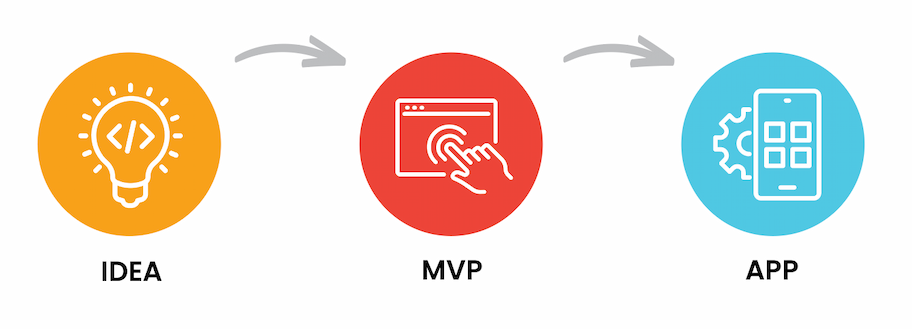The Value of True Customer Discovery

Over the years I’ve seen far too many startups and product teams have an idea, do minimal (or no) customer discovery, build an MVP, declare it is a success, and proceed to the full product build. When they launch their product and it fails to get traction in the market, they are shocked. Then, it’s time to panic and wonder what went wrong.
The holy grail for product teams is to find Product / Market fit. Coined by Mark Andreessen, he said, “Product / Market fit means being in a good market with a product that can satisfy that market”. It sounds simple, and conceptually it is, but most products never find it. But here’s the thing — virtually every single one of those product teams thought they had nailed Product / Market fit.
Recently I wrote about the Solution Fixation Trap, which occurs when product teams build solutions before fully understanding the problems they are trying to solve. It’s my belief that this happens with the vast majority of new products, and in all these cases, customer discovery was given short shrift. In fact, this is the is often the sequence in a new product development process:

By shortcutting the customer and market discovery and skipping the prototyping phases, you introduce enormous risk that you will build something that fails to get traction (Product / Market Fit). There could be many reasons for failure, from not solving the problem, to poor user experience, and you won’t know until you launch! It’s a recipe for a failed product entirely.
Instead, a far better product journey would look something like this:

In this scenario, the product development journey starts with customer discovery to look for problems that are big enough that a solution might be worthy of adoption. I say “might be worthy” because that won’t be validated until later. In this first discovery phase, you are not pitching solutions, only looking for problems. In future blogs we’ll talk a lot more about this process, but for now we are focusing on the path to an MVP and beyond.
Also, it’s important to note that customer discovery is not a singular thing to be completed once, but it’s a continuous process of engagement that is done throughout the development process. The illustration above stops at the App stage, but really is something that should never end. As your product evolves and grows, you should be using customer discovery constantly to ensure that what you are building has value and gives users a better experience.
In the Definition phase we’ll use that discovery to define the problem we are going to try to solve. Why is that important? Because it crystallizes what you have learned and distills that into something actionable.
Ideation is where you look for solutions to the problem. Techniques such as brainstorming, mindmapping, sketchstorming, and other methods can help you find creative solutions to the problems you are looking to solve.
From there, we’ll use Prototyping and Testing to validate our solution. We are determining not just that our solution solves the problem, but that it’s viable from a business perspective. That’s harder to do, but it’s crucial.
The Value of Iteration
I can’t stress iteration too strongly. It’s the key component of the process that allows you to get closer to the truth, which is answering the question:
Am I addressing a big enough problem and is our solution compelling and valuable enough to achieve business viability?
Iterative product development is an agile process that seeks to incrementally develop, test, and validate that what you are building has value, and is addressing the needs of the users.
Shorter time to Product / Market fit
You’ll know much faster if you are addressing the needs of the users.
Reduces risk
There is nothing worse than launching a full product that falls flat in the marketplace.
Lowers development cost
It might seem counterintuitive, but doing more on the discovery and prototyping phase decreases the number of false starts and pivots you will need to make.
Finding Your Mainstream Customers
When talking to founders and product teams, one of the big deficiencies of their customer discovery process is not including enough actual mainstream customers, and instead relying too much on existing customers, friends, and their own personal experience. While those experiences with those related users might be valid, until you connect with your actual target customers that know nothing about you, you will have no way to know if what you have discovered is valid.
I saw a study recently of postmortems of some failed startups, and this was cited repeatedly. Founders lamented that they had not spent enough time with those mainstream users and didn’t survive contact with the market when they launched.
That’s not to say that early adopters don’t have value — they are like gold!

They are your evangelists, they will promote you to their network, they give you feedback on product development iterations, but they often don’t represent your mainstream market. If you build your product on their “rah-rah”, you risk wondering why your product traction is poor after launch.
Finding your MVP
The concept of the Minimum Viable Product is one of those hot topics that everyone seems to have an opinion about, including me! There are gazillions of thoughts on what an MVP is, what they are for, how to create one, and why they are an important milestone in a product journey.
Unfortunately, for so many teams, the MVP has become a box to check in the rush to build the full product. If you were to talk to the product teams of the 95% that failed, they would probably all tell you that they had built a successful MVP. Yet when they launched their product, they failed to get traction and their product failed. So, what went wrong?
I think the problem is that too often we think of the MVP as a singular thing to be built when it’s part of a process to be embraced. As innovators, it’s important that we learn about our customers’ needs and problems first with empathy, and from there we can begin forming ideas to solve those problems. Then we can start testing those ideas by prototyping, and creating simple and fast ways to validate them, and iterate until we have a high degree of confidence that what we are building has value.
Summary
As innovators, we must be continuously listening to our customers, to find out their needs and problems, then ideating, prototyping, and iterating to validate what we are building continuously throughout the product lifecycle. This isn’t something you just do “one and done”, but it should become part of your culture, and it should never end.
Schedule Your Free Strategic Project Review & Project Brief
Developing great digital products is our passion. Not sure how to start that journey? Let us help you find the right path. Schedule a free 1-hour consultation with our team. At the end we’ll deliver a Project Brief that will help you to crystalize your vision.
